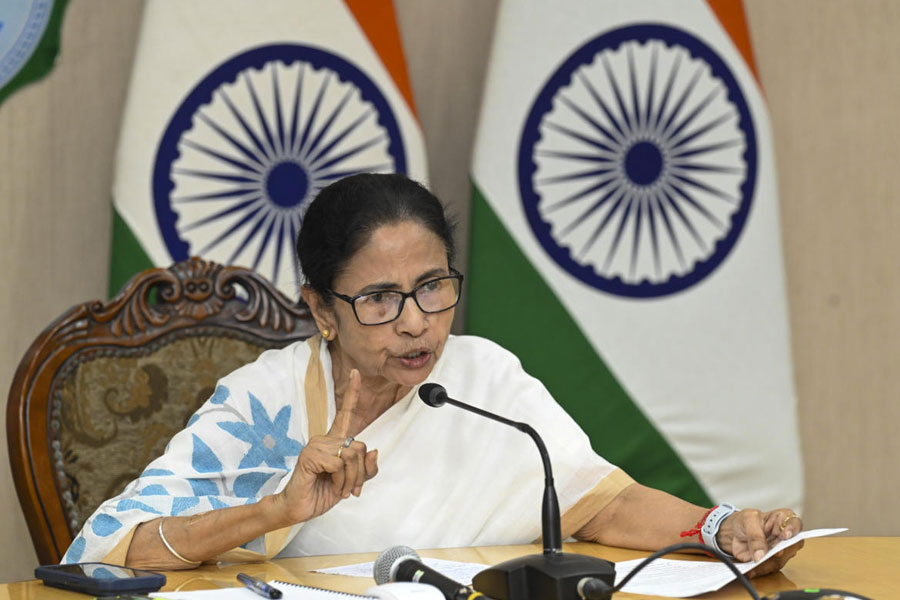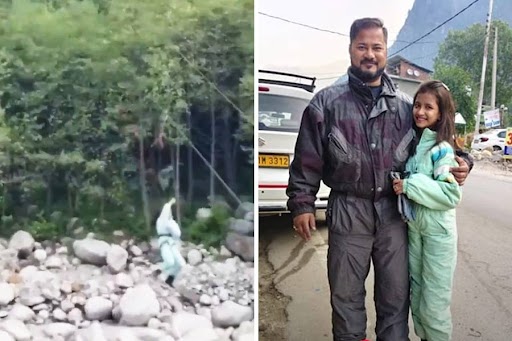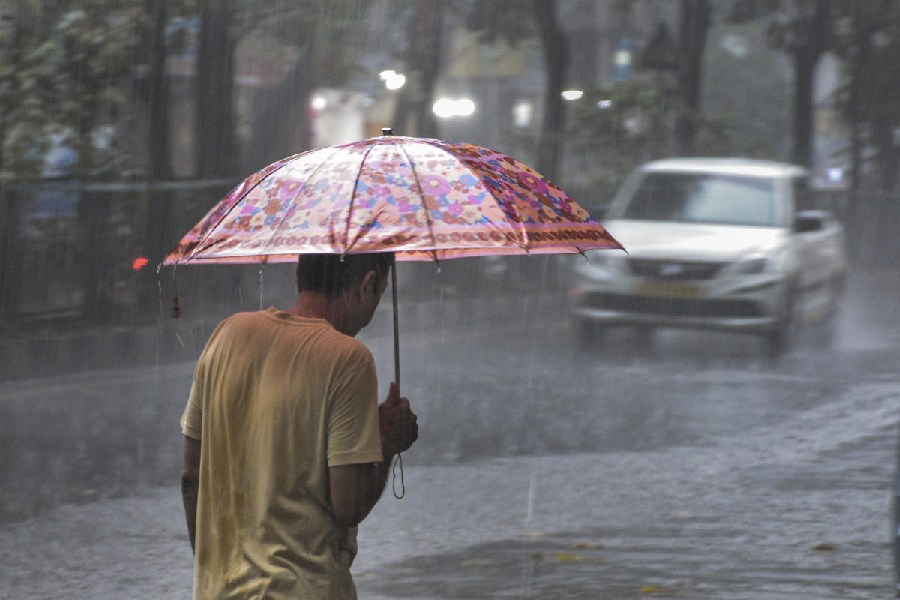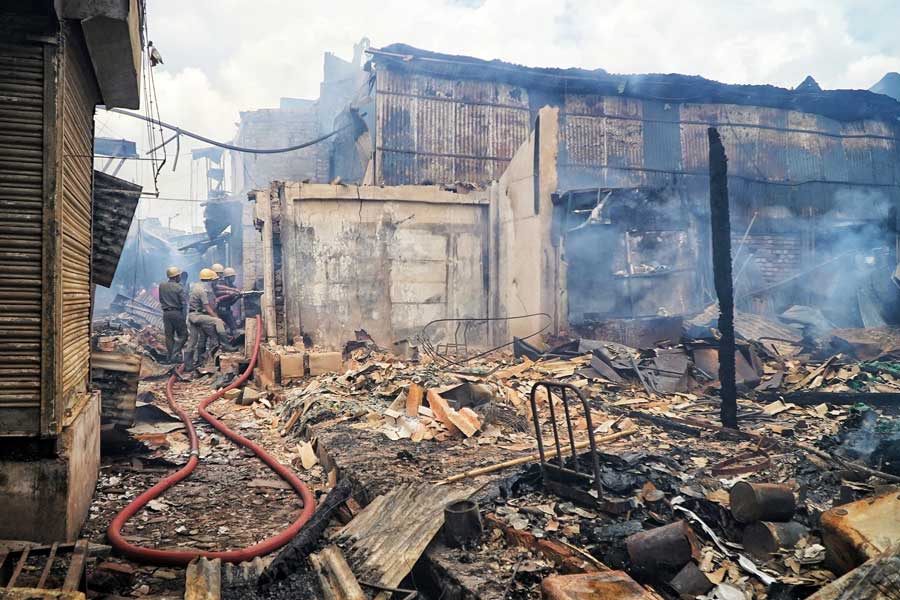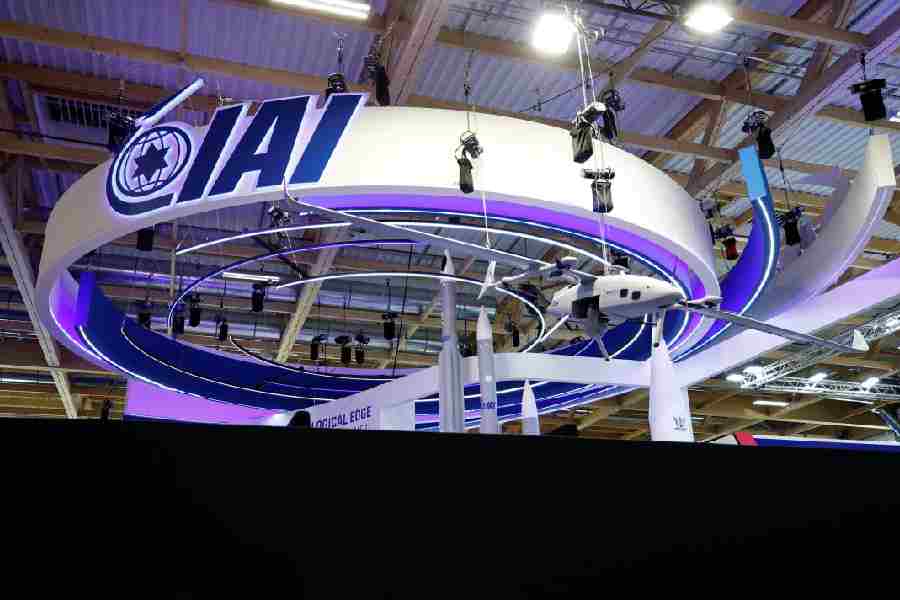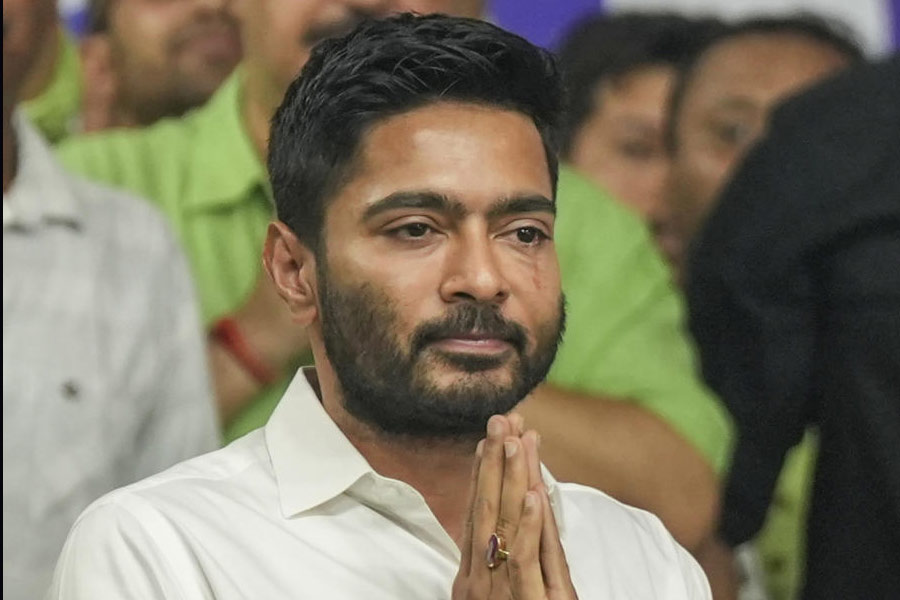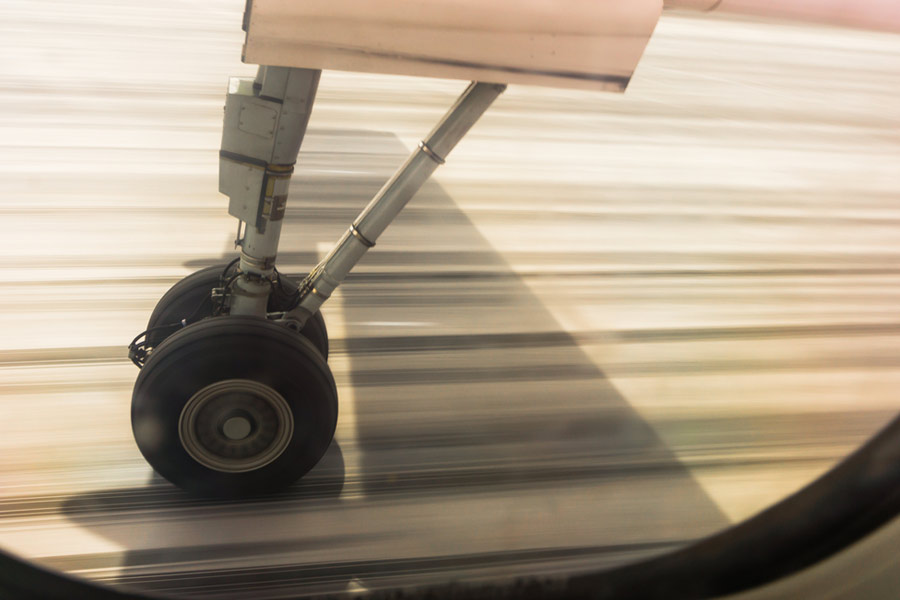 |
| Jyoti Basu’s son Chandan in front of AMRI Hospitals just after CPM leader Biman Bose had announced the former chief minister’s death at 12.12pm. Picture by Pabitra Das |
Sunday, 3.03pm. The hearse carrying Jyoti Basu’s body, draped in a red flag bearing the hammer and sickle symbol of the CPM, left the Salt Lake hospital where the 95-year-old former chief minister had been battling for life since January 1.
Thousands who had gathered in front of AMRI Hospitals to pay respect to the departed leader stood in two rows on the road in front, with “Comrade Jyoti Basu lal salaam” on their lips.
The convoy of almost 30 cars, led by the hearse, made its way between the rows of people for around 250 metres towards the Bypass, before taking a U-turn and heading for the house of Basu’s son Chandan.
The convoy stopped in front of FD 452B for a couple of minutes for Chandan’s wife Rakhi and nine-year-old son Subhojyoti — Basu called him Panku — to offer their pranam.
Chandan, who had left the hospital a little ahead of the hearse, then joined the convoy in a separate car.
Next stop, Indira Bhavan in DE block, which was Basu’s home from 1989 — and which he was reluctant to leave on January 1, when he was hospitalised for the last time.
Following a teary farewell by the employees of the house, the hearse headed for the Bypass travelling past the statue of a smiling Bidhan Chandra Roy, Bengal’s first chief minister with whom Basu shared a special bond, and down the road in front of AMRI.
Once it hit the Bypass, the convoy travelled south — past red flags at half mast and groups of mourners gathered at several spots — and turned right at the Science City crossing. From Indira Bhavan to the Park Circus connector, the hearse travelled the same route that Basu used to take every working day when he was chief minister till November 2000.
It then headed for Peace Haven via the Park Circus seven-point crossing, Shakespeare Sarani and Wood Street.
Peace Haven on Rafi Ahmed Kidwai Road reverberated with slogans like “Jyoti Basu amar rahe” and “Jyoti Basu lal salaam” when the convoy rolled in at 3.45pm.
Around 100 comrades, each holding a CPM flag, made a ring around the hearse. “It’s a sad moment for all CPM members and sympathisers. We all feel orphaned today,” said Nilotpal Ghosh, a member of the party’s Calcutta district committee.
People started flocking to Peace Haven as soon as word spread that the body would be kept there till Tuesday morning. Around 1pm, Rafi Ahmed Kidwai Road was a sea of heads, with vehicular movement stopped between the Elliot Road crossing and Haji Mohammad Mohsin Square.
Many stood with folded hands, some held their right fist high in red salute while a few wept as the convoy wound its way to the mortuary. The roofs of almost all houses were chock-a-block.
“I have come from Gol Park to salute the great leader one last time. I was closely following the developments in hospital. When I heard he had passed away, I could not stop myself from coming here,” said Raja Sengupta, a retired employee of the Reserve Bank of India.
Bablu Mukherjee, a resident of Bhowanipore, was echoing many in the throng when he said: “I am not a communist, nor a supporter of the CPM, but have always held Basu in high esteem. He had a charisma that no other political leader could boast of.”
That’s what Congress leader Manas Bhunia might have meant when he said at AMRI Hospitals on Sunday: “Jyoti Basu was 60 per cent communist and 40 per cent himself.”
 |
To me he was always an uncle. I loved him and he loved me. Arekta history shesh hoye gelo. He was one of the greatest leaders of the country
Mithun Chakraborty, actor, at AMRI on Sunday
 |
I first met him in the 1940s, after he returned from London. He used to give lectures at Student Federation meetings that I used to attend. His death marks the end of an era
Mrinal Sen, film-maker, at AMRI on Sunday


